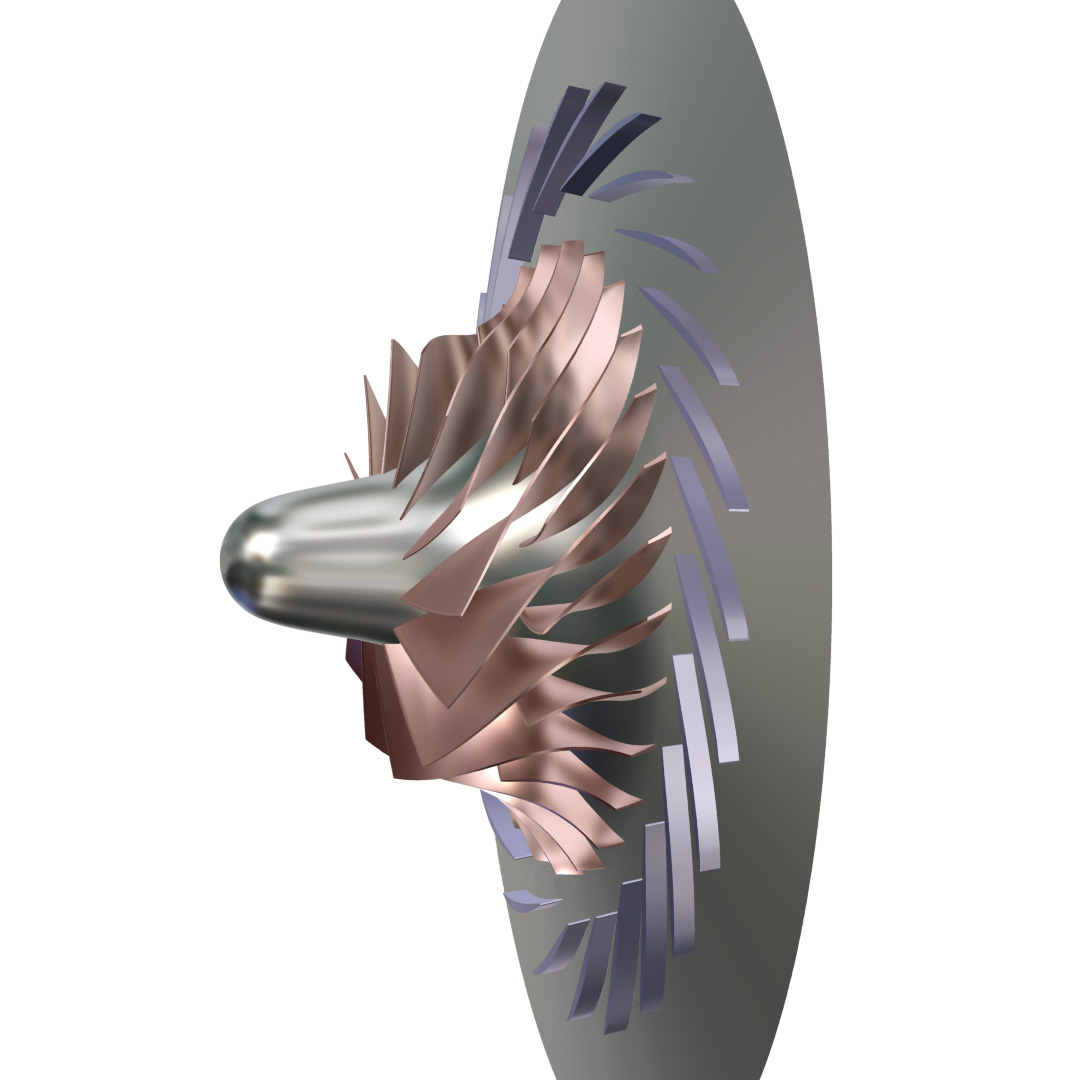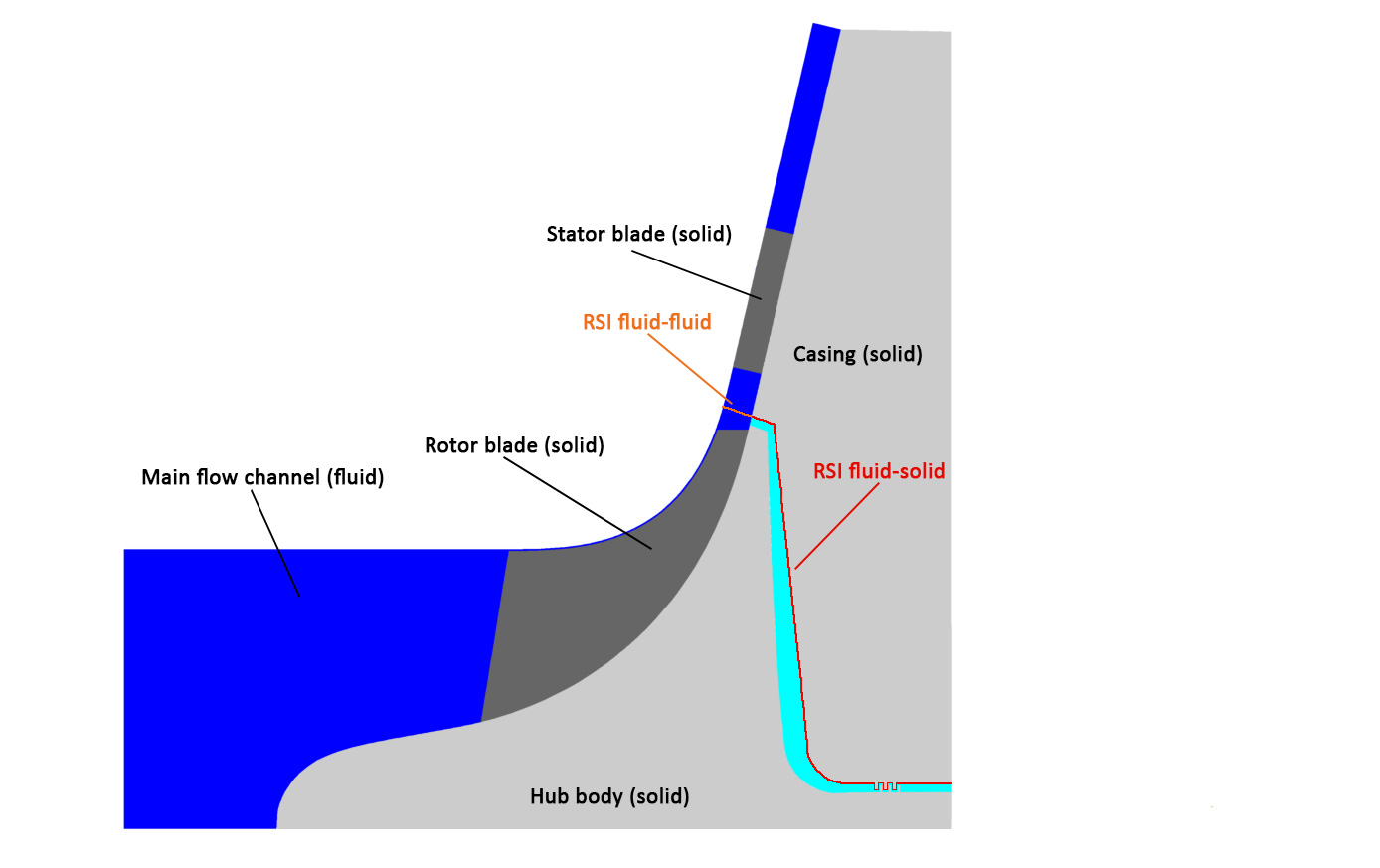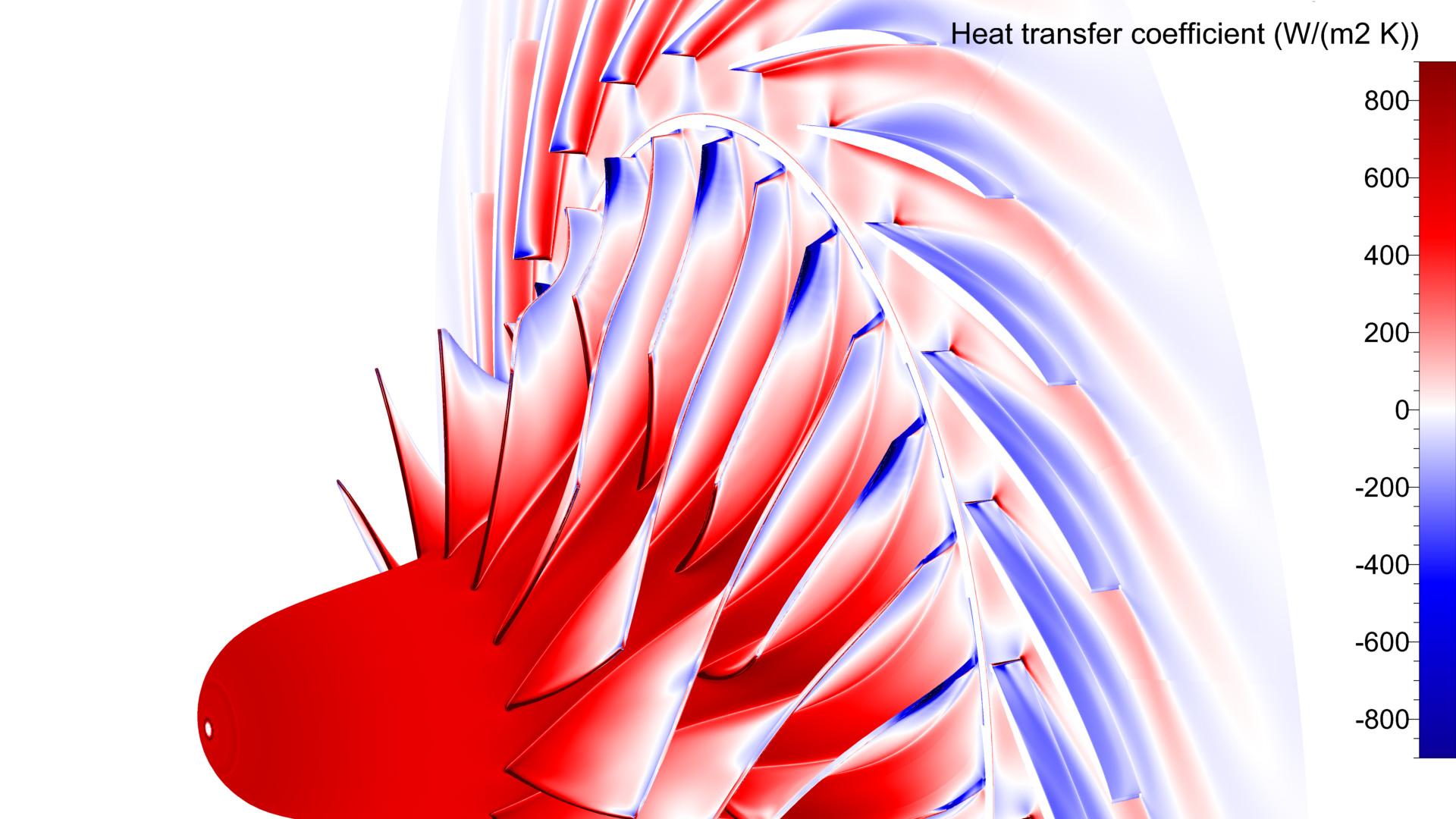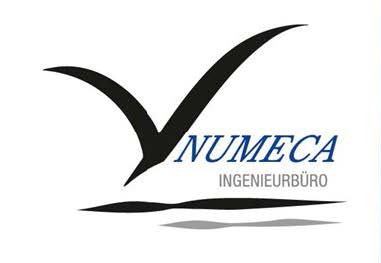Numerical Modelling of Heat Transfer in a Radial Compressor
Turbomachinery
In the following, the workflow for reliable temperature field prediction is presented within the simulation of a radial compressor, the SRV4 shown in Figure 1. The simulations are conducted with the highly efficient NUMECA tools, which allow computations at low costs.
First different levels of detail in modelling “Conjugate Heat Transfer” (CHT) are conducted by considering different domains using a fully structured approach. Second the meshing and simulation strategy comparing a structured and hybrid approach are investigated.
Levels of Detail in Modelling CHT
The investigated radial compressor (SRV4) consists of two solid bodies, the rotor and stator, as shown in Figure 2. Adjacent to the main flow channel is a cavity, which is modelled with another fluid domain. Different levels of details of the domain are generated in order to investigate their influence on the resulting temperature field:
- (a) No CHT: Fluid domains only (main flow channel and cavity)
- (b) Lean CHT: Fluid domains + solid blades
- (c) Full CHT: Fluid domains + solid blades + solid hub body and casing
In order to better capture the flow pattern in the cavity under steady flow conditions, the rotor-stator interface is located between cavity (fluid, rotating) and casing (solid, non-rotating). By considering the heat transfer in the solid domain, the accuracy of the temperature prediction increases: The temperature peak at the blade tips at trailing edge is lower when using CHT in the solid part of the blades, as shown in Figure 3. Taking also into account the solid hub and casing, the heat flux inside the impeller transports the heat towards the bulb of the impeller, resulting in a higher temperature, as shown in Figure 4.
Meshing and Simulation Approaches
Two different strategies of meshing the radial compressor are used for detail level (c) with full CHT, namely a fully block-structured and a hybrid approach.
Block-Structured Approach
The block-structured grids are generated using AutoGrid5™. Instead of an HI topology, which is in general beneficial for the grid quality in the presence of splitter blades, the 4HO topology is used to obtain a matching connection inside the solid part of the blade between suction and pressure side. A matching connection in the solid domain is crucial in the presence of stronger temperature gradients, which is the case in the blade towards the trailing edge. The meridional technological effect in AutoGrid5™ is used to extrude the 4HO topology from the main flow channel to the solid impeller, resulting in a matching connection between these two parts.
The computation is performed with FINE™/Turbo and the coarse grid initialisation technique strongly accelerates the convergence. Due to the mixing plane approach (fluid-fluid and fluid-solid) only one blade passage is meshed for each domain.
Hybrid Approach
In the hybrid approach, the structured mesh from AutoGrid5™ is used for the fluid domain, but the solid mesh is generated using OMNIS™/HEXPRESS. At the fluid-solid interfaces, the grid resolution of the solid domain is set in accordance to the cell sizes of the fluid mesh to minimise interpolation errors.
The computation is performed with FINE™/OPEN using an implicit method in the solid domain of the CHT computation, which strongly improves the convergence behaviour.
Conclusion
Considering the complete domain, the heat flux transports the heat towards the bulb of the impeller, as visualised in the meridional view in Figure 5. This mechanism can also be seen in Figure 6, where the heat transfer coefficient is shown, indicating a heat flux solid-to-fluid and fluid-to-solid.
The temperature field of the CHT simulation can be used for structural simulations. The application of the temperature field from a CHT simulation typically has a moderate influence on maximum stresses and eigenfrequencies, but can have a large influence on the lifetime calculation in regions of strong temperature gradients.
For more information, please do not hesitate to contact us.
Products
 Figure 1: Model of the investigated radial compressor (SRV4)
Figure 1: Model of the investigated radial compressor (SRV4)  Figure 2: Meridional view of domain
Figure 2: Meridional view of domain  Figure 3: Blade temperatures of the models: (a) No CHT, (b) Lean CHT, (c) Full CHT
Figure 3: Blade temperatures of the models: (a) No CHT, (b) Lean CHT, (c) Full CHT  Figure 4: Temperature on hub of the models: (a) No CHT, (b) Lean CHT, (c) Full CHT
Figure 4: Temperature on hub of the models: (a) No CHT, (b) Lean CHT, (c) Full CHT  Figure 5: Meridional view of the temperature field in the solid domains showing the heat flux towards the bulb
Figure 5: Meridional view of the temperature field in the solid domains showing the heat flux towards the bulb  Figure 6: Heat transfer coefficient on the surfaces (heat flow from fluid-to-solid in blue, heat flow from solid-to-fluid in red).
Figure 6: Heat transfer coefficient on the surfaces (heat flow from fluid-to-solid in blue, heat flow from solid-to-fluid in red). 